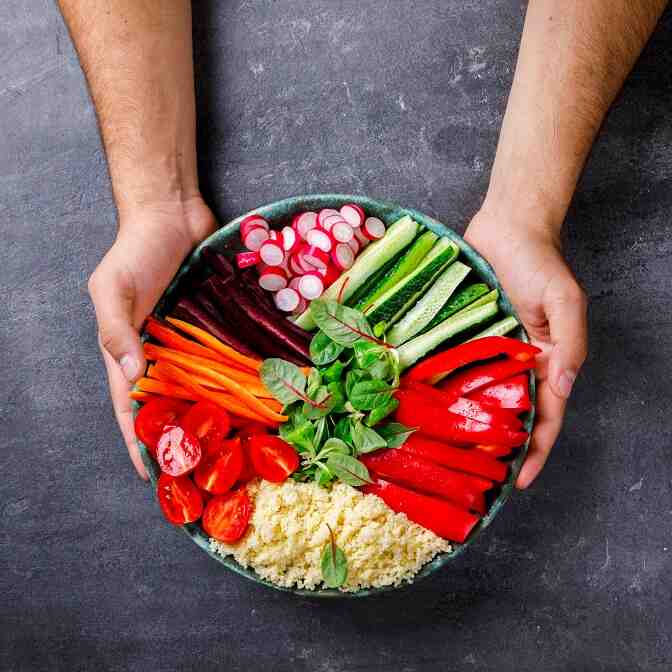How to Create a Weight Loss-Friendly Meal Plan
Embarking on a weight loss journey requires more than just willpower; it calls for a well-structured plan that balances nutrition, satisfaction, and sustainability. A weight loss-friendly meal plan can help you maintain a calorie deficit, provide essential nutrients, and keep hunger at bay. Here’s a step-by-step guide to creating a meal plan that works for you.
1. Set Clear Goals
Before designing your meal plan, define your weight loss objectives. Determine how much weight you aim to lose and set a realistic timeline. A healthy rate of weight loss is about 1-2 pounds per week, which typically requires a calorie deficit of 500-1,000 calories per day.
2. Calculate Your Caloric Needs
To create an effective meal plan, calculate your Total Daily Energy Expenditure (TDEE) using an online calculator or formula. Subtract 500-1,000 calories from your TDEE to determine your daily caloric intake for weight loss. Avoid reducing calories too drastically, as this can lead to nutrient deficiencies and unsustainable habits.
3. Focus on Macronutrient Balance
A balanced diet includes:
- Protein: Supports muscle maintenance and increases satiety. Aim for 25-30% of your daily calories from protein.
- Carbohydrates: Provide energy. Choose complex carbs like whole grains, fruits, and vegetables, making up 40-50% of your calories.
- Fats: Essential for hormone regulation and brain health. Include healthy fats from sources like avocados, nuts, and olive oil, accounting for 20-30% of your calories.
4. Plan Your Meals and Snacks
Divide your daily calorie allowance across 3-4 meals and 1-2 snacks. Ensure each meal contains a mix of protein, healthy fats, and fiber-rich carbohydrates to keep you full and energized.
Example Breakdown:
- Breakfast: 300-400 calories
- Snack: 100-200 calories
- Lunch: 400-500 calories
- Snack: 100-200 calories
- Dinner: 400-500 calories
5. Prioritize Nutrient-Dense Foods
Choose foods that are rich in vitamins, minerals, and fiber while being lower in calories. These include:
- Vegetables: Broccoli, spinach, carrots, and bell peppers.
- Fruits: Apples, berries, oranges, and melons.
- Whole Grains: Brown rice, quinoa, oats, and whole-grain bread.
- Lean Proteins: Chicken breast, turkey, tofu, and fish.
- Healthy Fats: Avocado, nuts, seeds, and olive oil.
6. Limit Processed and High-Calorie Foods
Minimize consumption of sugary drinks, fast food, and processed snacks. These foods are often calorie-dense and nutrient-poor, making it harder to achieve a calorie deficit.
7. Hydrate Adequately
Water is essential for weight loss and overall health. Drink at least 8-10 cups of water daily. Herbal teas and infused water can also help keep you hydrated.
8. Prepare Your Meals in Advance
Meal prepping can save time, reduce stress, and help you stay on track. Prepare ingredients or full meals in advance and store them in portion-sized containers. This prevents last-minute unhealthy choices.
9. Monitor Portion Sizes
Even healthy foods can hinder weight loss if eaten in large quantities. Use measuring cups, food scales, or visual portion guides to ensure proper serving sizes.
10. Be Flexible and Adjust as Needed
Your meal plan should be adaptable to your preferences, lifestyle, and progress. Monitor your results and adjust your calorie intake, macronutrient ratios, or food choices as necessary. Flexibility helps prevent burnout and promotes long-term adherence.
Sample Weight Loss-Friendly Meal Plan
Breakfast:
- Scrambled eggs (2 eggs) with spinach and a slice of whole-grain toast.
- 1 small orange.
Snack:
- A handful of almonds (15-20 nuts).
- 1 cup of cucumber slices.
Lunch:
- Grilled chicken breast (4 oz) with quinoa (1/2 cup) and steamed broccoli (1 cup).
- A side salad with mixed greens, cherry tomatoes, and balsamic vinaigrette.
Snack:
- Greek yogurt (plain, 1/2 cup) with a drizzle of honey and a sprinkle of chia seeds.
Dinner:
- Baked salmon (4 oz) with roasted sweet potatoes (1/2 cup) and asparagus (1 cup).
- 1 teaspoon of olive oil for roasting.
Dessert (Optional):
- A small square of dark chocolate (70% cocoa or higher).
Additional Tips for Success
- Incorporate Physical Activity: Pair your meal plan with regular exercise, such as walking, strength training, or yoga, to enhance weight loss and improve overall health.
- Track Your Progress: Use a food diary or app to monitor your meals, snacks, and calorie intake. Adjust as needed to stay on track.
- Practice Mindful Eating: Pay attention to hunger and fullness cues. Eat slowly and savor your meals to prevent overeating.
- Allow for Treats: Restricting yourself completely can lead to cravings and binges. Include occasional treats in moderation to maintain balance.
Conclusion
Creating a weight loss-friendly meal plan doesn’t have to be complicated. By focusing on balanced, nutrient-dense meals, staying mindful of portions, and planning ahead, you can achieve sustainable weight loss. Remember, consistency and flexibility are key to long-term success. With the right approach, you’ll not only shed unwanted pounds but also cultivate a healthier and more enjoyable relationship with food.






